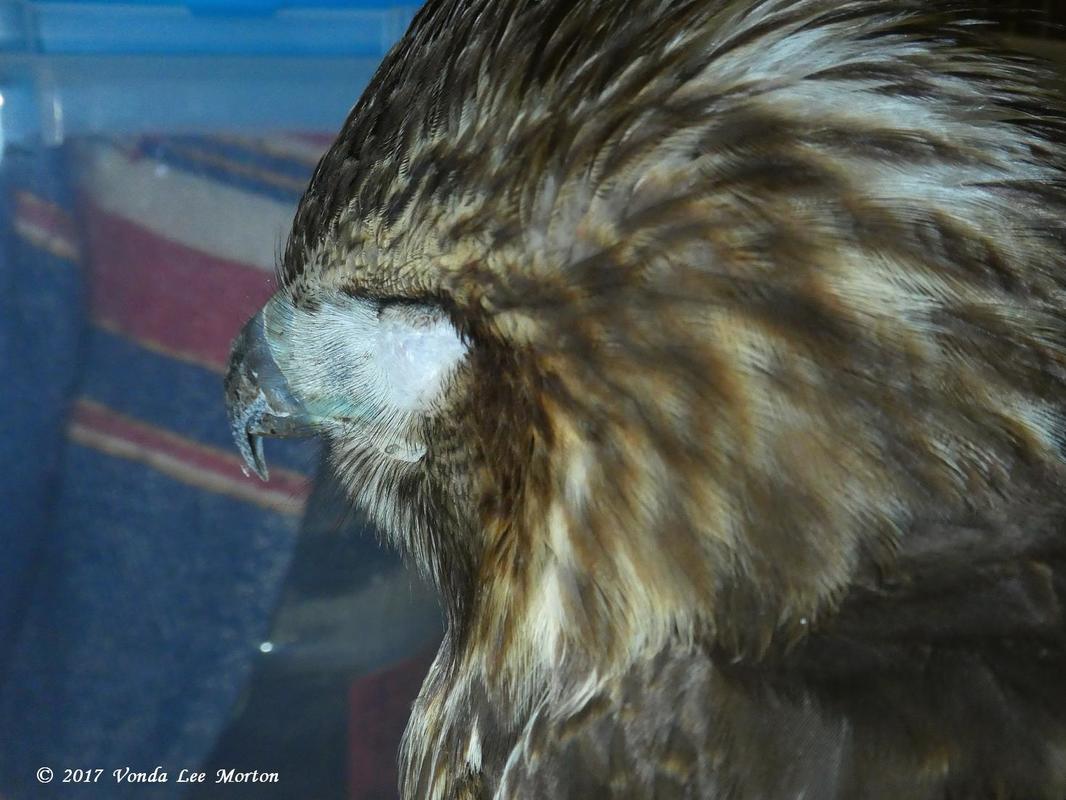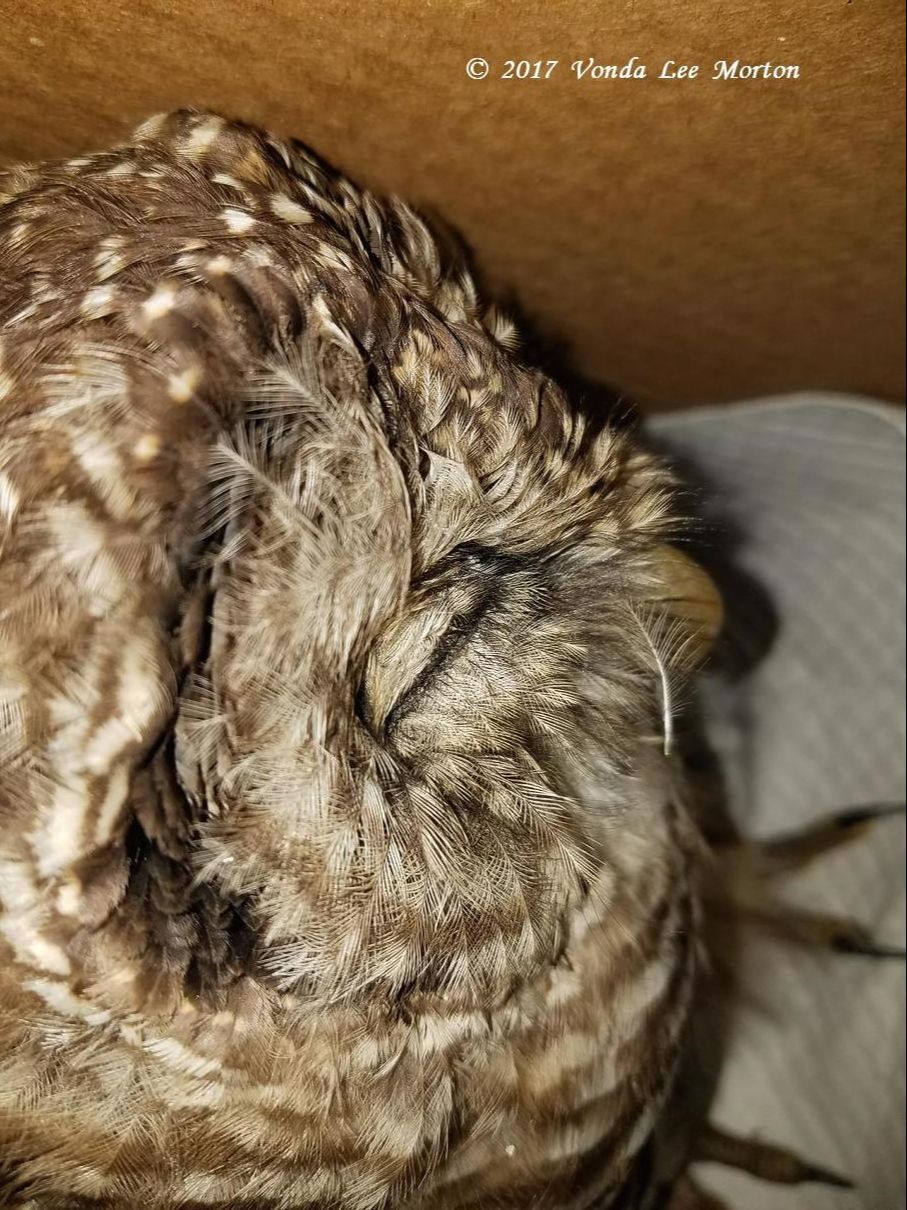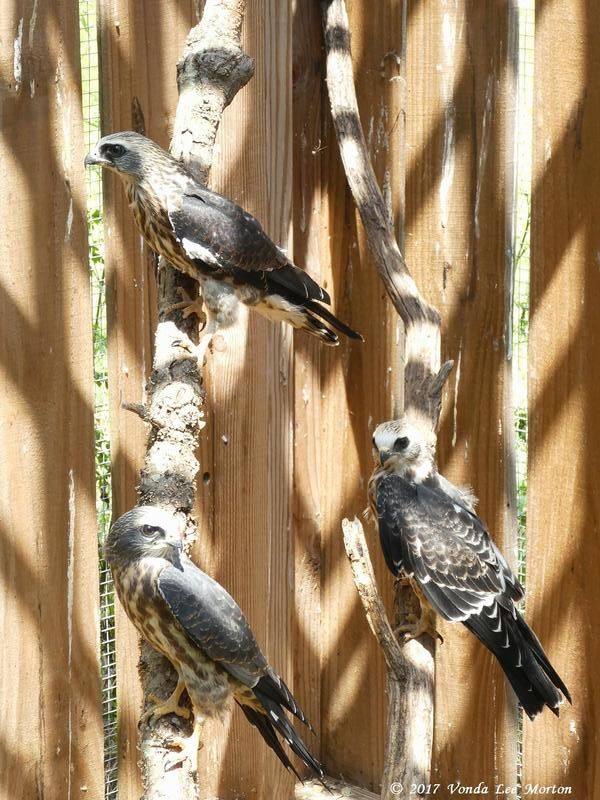The first red-tail came in early in the week and was thin, lethargic and having tremors. I suspected West Nile, but withheld judgment till the bird had seen a vet. At Smalley’s Animal Hospital the day after intake, vet Richie Hatcher agreed that the symptoms could be WNV. The problem was that those symptoms could also be from a combination of capillaria and head trauma—and the bird was found by the roadside. We agreed that general supportive care and treatment for the possibility of capillaria was the best course of action. Thus far, the bird isn’t responding to treatment. It’s not looking promising.
- Phase 1: Depression, anorexia, weight loss (in proportion to duration of anorexia), sleeping, pinching off blood feathers. Elevated white cell count.
- Phase 2: In addition to the above, head tremors, green urates (indicating liver necrosis), mental dullness/central blindness and general lack of awareness of surroundings, ataxia (clumsiness), weakness in legs.
- Phase 3: More severe tremors, seizures.
I’d guess this bird was solidly in Phase 2, heading toward Phase 3, given that he doesn’t respond to his surroundings to any great extent and we were able to sit him unrestrained on the exam table, where he rocked and nearly tipped over sideways.
Sadly, there is no treatment for WNV; all rehabbers and vets can do is provide supportive care and hope. Again, according to the UMN Raptor Center, “There is no prescribed treatment. But supportive care can be provided, and it is possible for birds to recover. In general, the likelihood of recovery depends on what phase the bird is in. Phase 1 birds respond reasonably well to supportive care. Once they reach Phase 2, some birds respond to supportive care, but others do not and proceed to Phase 3. Complete recovery is uncertain. Birds suffering from the severe tremors and seizures characteristic of Phase 3 are close to death.”
The second red-tail came in a few days later; his symptoms and response to treatment are eerily similar to the first. If they’d come from areas close to each other, I’d honestly warn the county officials they might have a West Nile outbreak, but they came from counties north and south of Laurens County.
The photos below show the difference a cloud passing overhead can make in the quality of the image. In the video you can hear two characteristic MIKI vocalizations.



















 RSS Feed
RSS Feed
